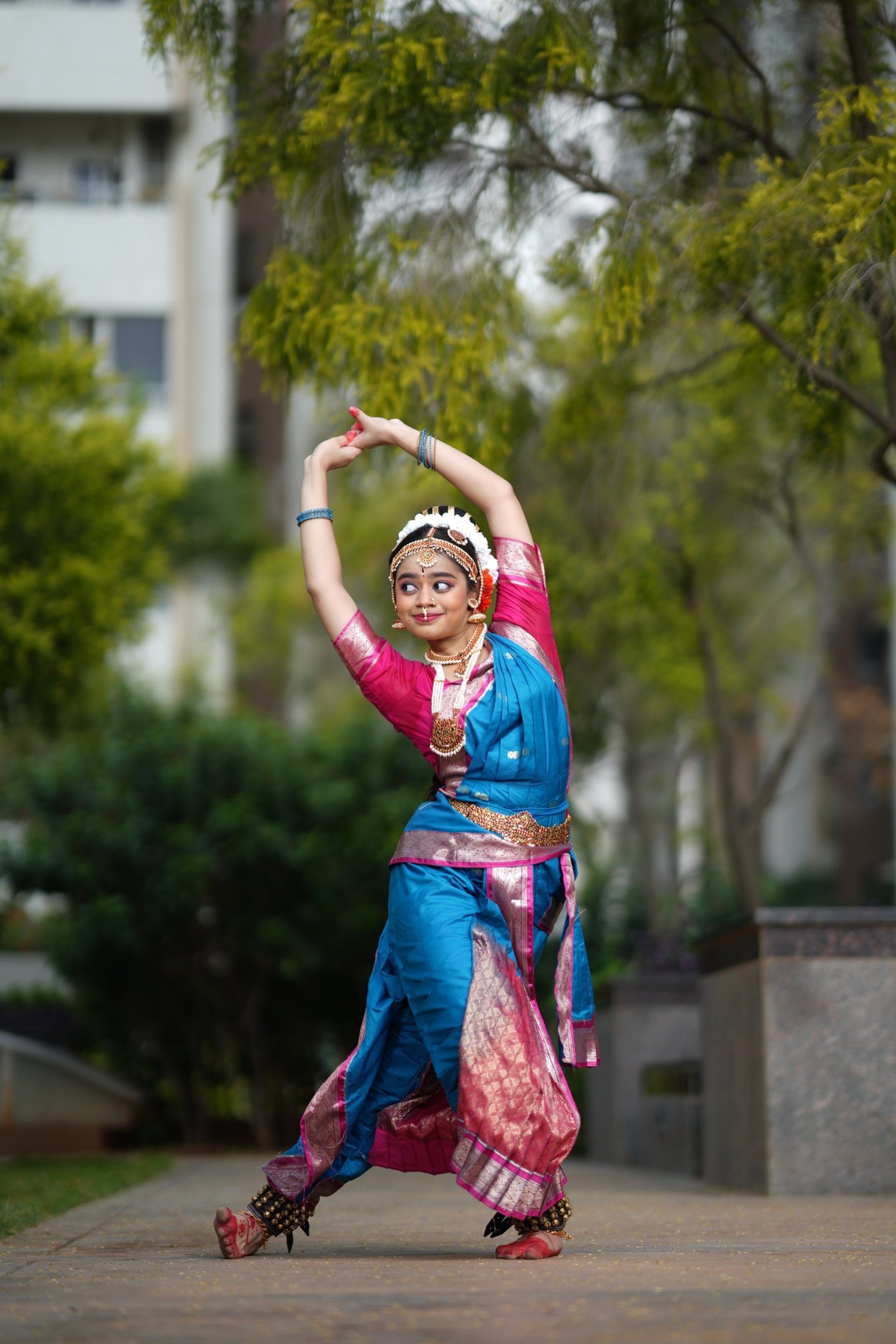
The Legacy of Kuchipudi
A Tapestry of Tradition and Innovation
Kuchipudi, a vibrant classical dance form of India, stands as a testament to the enduring power of artistic expression. Its roots lie deep within the ancient Indian treatise on performing arts, the Natyashastra, which laid the foundation for all classical Indian dances. This foundational text, dating back to the 2nd century BCE, outlines the principles of dance, music, and drama, emphasizing the profound connection between art and spirituality.
According to legend, the gods, concerned about the declining moral order, approached Brahma, the creator, seeking a form of art that could both entertain and enlighten. Brahma, drawing upon the essence of the four Vedas (Rig Veda, Sama Veda, Yajur Veda, and Atharva Veda), conceived the fifth Veda: Natya Veda.
Rig Veda: Provided the foundation of literature (Pathyam).
Sama Veda: Contributed the melodic aspects of music (Sangeetham).
Yajur Veda: Offered the principles of histrionic representation (Abhinaya).
Atharva Veda: Inculcated the expression of human emotions (Rasa).
Brahma then entrusted the sage Bharata with the task of codifying this knowledge, resulting in the Natyashastra. Over centuries, this foundational text gave rise to a diverse array of Indian classical dance forms, each with its unique regional characteristics and stylistic nuances. Among these vibrant traditions, Kuchipudi emerged as a distinct and captivating expression of the Indian performing arts.
Emerging from the village of Kuchipudi in Andhra Pradesh, this dance form evolved over centuries, nurtured by generations of dedicated artists. While the devadasi tradition was declining, Kuchipudi emerged as Bhagavata Mela Natakam, rooted in the Natya technique. Siddhendra Yogi, a renowned scholar and devotee of Lord Krishna, is considered the father of Kuchipudi. Orphaned at a young age, he was raised by kind neighbors and later deeply influenced by the teachings of Narahari Teertha. After rigorous training in Udupi, he returned to Srikakulam and composed the dance-drama "Parijatapaharanam." He gathered Brahmin boys, instructing them to learn and perform this piece annually as an offering to Lord Krishna. These boys, adhering to strict discipline under Siddhendra's tutelage, were known as Dvija Kumarulu.
Siddhendra established a rigorous syllabus for Kuchipudi, emphasizing the study of Shastras, Vedas, Natyashastra, and music. While he refused to teach the sensuous "Bhamakalapam" to the devadasis, Kuchipudi dancers later incorporated Yakshagana, dance-dramas, and Kshethrayya padams into their repertoire.
Kuchipudi's legacy extends far beyond its artistic brilliance. It serves as a powerful medium for cultural preservation, transmitting ancient stories, myths, and philosophical concepts across generations. The graceful movements, intricate footwork, and expressive gestures of Kuchipudi not only entertain but also inspire, offering profound insights into human emotions and the complexities of life.
Performances traditionally involved elaborate productions lasting several days, allowing audiences to witness the art form even at night. Dancers demonstrated remarkable improvisational skills, adapting to the audience's needs. The introduction of solo performances, including Tarangams, Shabdams, Keerthanas, Padams, and Ashtapadis, by legendary figures like Vedantam Lakshmi Narayana Shastry further enriched the form.
Today, Kuchipudi continues to evolve, embracing contemporary influences while staying true to its rich heritage. Renowned dancers and choreographers are pushing the boundaries of this art form, creating innovative works that captivate audiences worldwide. Through its unique blend of tradition and innovation, Kuchipudi continues to inspire and enrich the lives of people across the globe, ensuring that this timeless art form will continue to flourish for generations to come.